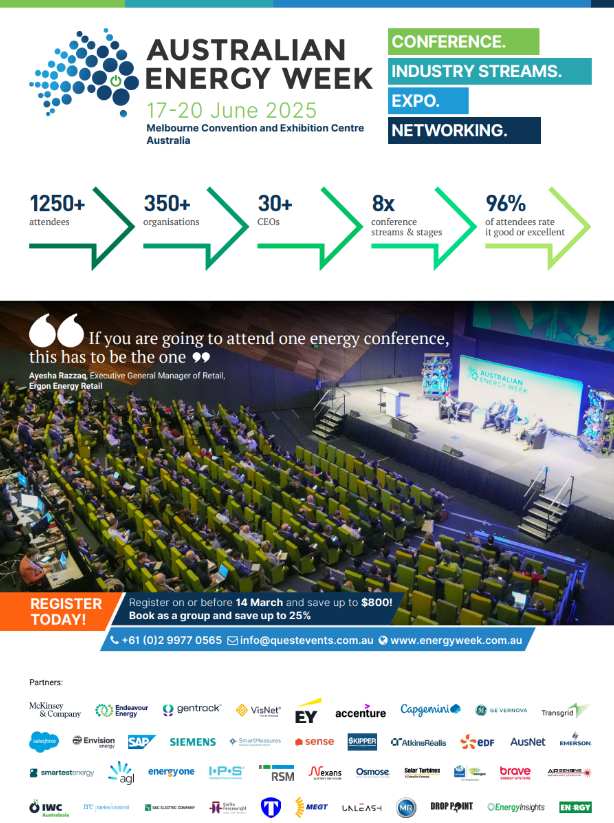Article: From coal to clean: the high-stakes gamble of Australia’s energy overhaul
Australia's energy landscape is undergoing a profound transformation, driven by technological advancements, a shift towards renewable energy, and changing consumer expectations. However building a new ‘fit for purpose’ regulatory model during this transition creates problems; in the absence of stable policy, stakeholders are hesitant to make the substantial investments required to support a clean energy system.
National Electricity Market structure review
The Federal Government’s review of the National Electricity Market (NEM) wholesale market settings, chaired by Tim Nelson, is focused on ensuring the wholesale market settings can deliver sufficiently firmed energy supplies as renewable generation becomes a dominant energy source and coal-fired generation is phased out. The challenge is that as intermittent renewables take over, changes are needed to adequately incentivise dispatchable energy supply at least cost, without significantly increasing Australia’s emissions profile.
But, as the Australian Energy Council’s Louisa Kinnear puts it, “We have been here before. We have admired this problem from many angles, many times across many governments.”
The AEC would like to see constructive debate of the options on the table by all parties involved, “we all need to be working towards a common vision of what the future wholesale energy market should look like.”
Promoting consumer choice and innovation
Clare Savage, chair of the Australian Energy Regulator, said in December 2024 that a major review of the electricity market revealed several issues, including a worrying concentration of power among traditional generators, even as a crowd of renewable players dominate the market during the day. Savage avoids calling the NEM ‘broken,’ but she is concerned that it may not serve consumers’ long-term interests.
Concerns about consumers are also top of mind for the Australian Energy Market Commission (AEMC). In its first modelling of the growing take-up of renewable generation, electric vehicles and home batteries, the AEMC said bills could be 20 per cent lower by 2034.
Anna Collyer, the AEMC’s chairwoman, said she hoped the analysis would help state and federal government officials target the most efficient policies to make sure the energy transition meant lower bills.
“It’s really important to look at the range of measures that can be taken to ensure that all customers have equal opportunity to access the benefits from what we call customer energy resources, so solar and EVs,” she said.
“You’ve got some customers who can get all these things and are really actively engaged. At the other end of the spectrum, customers who are renting or live in an apartment have less opportunity to do that.”
The AEMC has identified the need to consider the role and economic regulation of distribution network service providers in light of DER integration, ensuring that regulatory frameworks support the efficient deployment and operation of these technologies.
Social licence
Rising energy costs are one reason Australians are losing confidence in the energy transition. The erection of renewable infrastructure (wind turbines and solar farms) and transmission lines are flashpoints for conflict.
The Western Australian Government's coordinator of energy, Jai Thomas, says, “The reality is our coal timelines are set … and ultimately we need the new generation, the wind energy in particular, ahead of that.”
Referencing the way resource developments typically establish social licence, he says “This isn't like the mining sector, where royalties are derived from digging commodities out of the ground.”
Thomas believes strong community benefit frameworks can help to establish social licence for communities impacted by developments.
Impact of a change of government In Australia… and the US
The Coalition want to see nuclear energy as part of the Australian energy system. It has also been suggested that they will reject Australia’s 2035 Paris climate target, which may make investors shy away from renewable projects. Matt Kean has described the Coalition’s nuclear plans as a “fantasy” and its uncertainty on climate targets as “chilling” to investment.
Kean, a moderate Liberal and the former NSW treasurer is currently Chair of the Climate Change Authority and has also noted that “the election of Donald Trump, his statements on climate change and positions on energy policy are likely to have a global impact.”
Kean believes it’s crucial to reassess the assumptions that guide the Climate Change Authority’s advice to the government on Australia’s Nationally Determined Contribution. Consequently, the Albanese government will delay its 2035 emissions reduction target beyond the federal election.
However, this hinges on the outcome of the election. The Coalition has already made it clear that Kean won’t be part of a Dutton government.
Tim Nelson (NEM Review), Louisa Kinnear (Australian Energy Council), Clare Savage (Australian Energy Regulator), Anna Collyer (Australian Energy Market Commission), Jai Thomas (Energy Policy WA), Matt Kean (Climate Change Authority) and host of other policy makers and commentators will be examining recent policy and proposed regulation at Australian Energy Week.
To access the detailed conference program, download the brochure here.
For more exclusive content written for energy industry professionals sign up to the Energy Insights blog.
Download the Brochure


